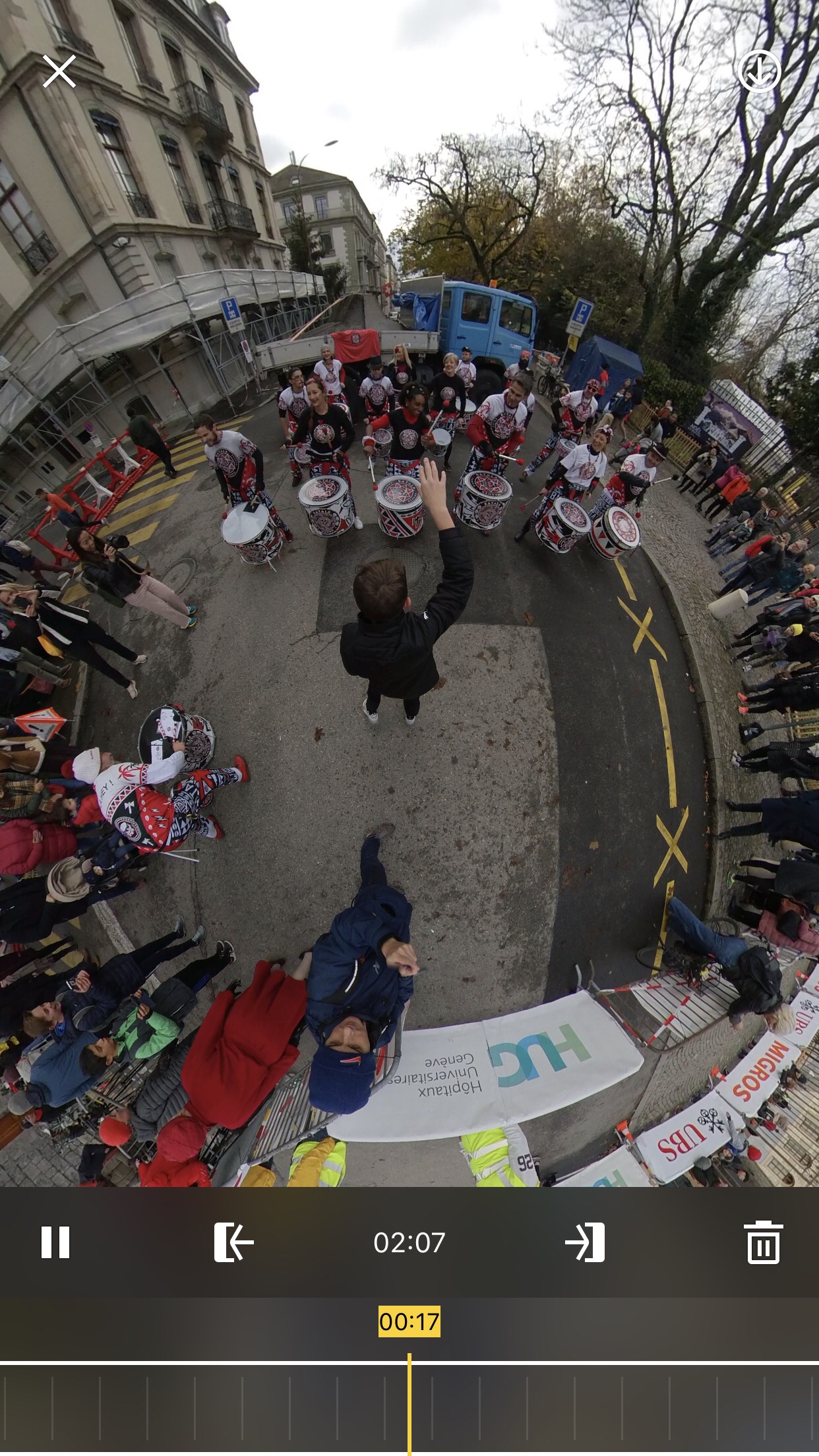I was at the World Virtual Reality Forum in Crans Montana this weekend as a volunteer. During this time I was able to try many of the demonstrations and get a real feel for the potential of 360° and immersive videos. I was also able to listen to people comment on what they appreciated about the experiences and what they did not like.
Vulkane in 3D und 360
One of my favourite experiences was Vulkane in 3D und 360. I worked at this exhibit two out of the three days helping two people at a time every three minutes experience this. I had watched a number of videos before this one and when I watched this one I said Wow because the experience was so beautiful. The quality is excellent and there are some vistas that are spectacular. We are familiar with watching volcanic eruptions but with this experience we are watching the scene as if we are there. As the volcano erupts we can see the projectiles and follow their course through the sky. This is a novel experience for many of us.
Chernoby VR project – 360
Another experience that I got to try and received good feedback from was the Chernobyl 30th Anniversary experience. In this case you launch an app on the mobile phone and you can see a number of videos. You have interviews, videos of locations and interactive content. With this experience you can listen to an interview with a woman who still lives in Chernobyl. As she talks you can look around the room in which she lives. This provides you with a better understanding of whom she is.
Reframe Iran
Reframe Iran is another 360° immersive documentary experience. This experience was appreciated by some and disliked by others. If you study documentary making you are familiar with Cinéma Verité, direct cinema and the fly on the wall concept. In this documentary a 360° camera was put in between the journalist and camera crew and the artist whom is speaking. As the artist speaks you can look around the room. You can look at the journalist, at the artist’s work, the couch in one corner or the bookshelf. You are in the room with them, like a fly on the wall. If you appreciate direct cinema and Cinéma Verité then you will enjoy this documentary.
DEFROST – The Series
Defrost was filmed using the Nokia Ozo and puts you in the place of a woman who was cryogenically frozen and then reanimated. For this experience we wore Samsung VR headsets and sat in a wheel chair. We were the re-animated woman. The experience was interesting because it allows you to feel empathy for whom you, as the viewer are meant to be.
The Difficult People Project.
The difficult People project has as it’s aim to provide people with an immersive experience in to the world as perceived by people with a different perspective on the world. In the first film we saw the world as someone would with hyperactivity. A second video was produced for the World VR forum and showed the world as someone with OCD would see it. This is a project that I personally contributed to with sound recording. The aim of the video was to provide you, as the viewer, with an experience of what it is like to go shopping with the disorder. You see the coping mechanisms via her interior monologue. You hear her worry that people are watching her, that people will see that she buys three of everything and that she may steal if she is alone in the aisle.
On the first day of the conference I was helping people with this experience and as I received feedback I started to see 360° or immersive videos as literature because of the way in which it enables people to feel empathy for the subject of the video. Some people said that they were curious to see whether they suffered from the same problems.
Viens
Viens can be translated as either “come” or “follow me”. I saw this as art, as an experiment which took advantage of what 360° videos have to offer. The camera is hanging from the ceiling and you see a group of people standing around the camera. At first they are hidden behind plastic but as you get further in to the video you see nude people standing. As the film progresses the camera changes position. At one point the camera is lower and you are looking up at giants. At another moment you seeing the action from above.
In each sequence you have the choice of which action you most want to watch. In this experience you choose what you want to see, rather than the camera operator or director. You are in control. You are the camera operator. This video really demonstrates the power of 360° videos. It demonstrates how immersive film making is an opportunity to think about what works well as an immersive experience and what works well as conventional video content.
The new role of camera operators
Immersive video content requires the content maker to think as a camera operator, to think about what is in front of the camera and what is behind it. It requires a new way of lighting a scene and a new way of recording sound. Wireless technology makes this much easier. In hallway conversations I heard people speak about how important it is to think as much about what is going on in front of the camera as much as behind it. If there is nothing interesting to see behind the person then normal video is enough.
Content duration is also relevant. Virtual reality and immersive experiences are still new to people. The experience can be tiring so short content is best, for now. When people get used to immersive story telling program length can grow.
The challenge now is to find subjects that lend themselves well to immersive story telling.




